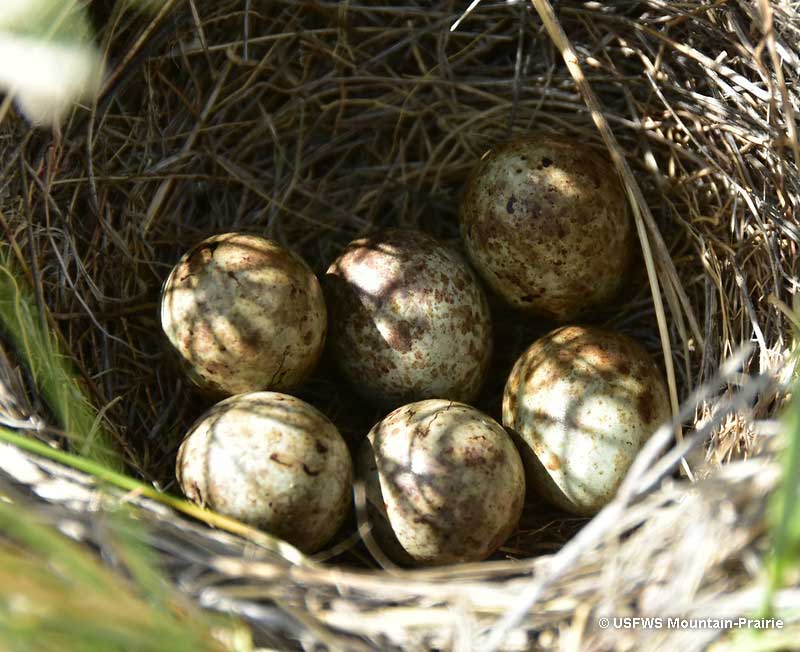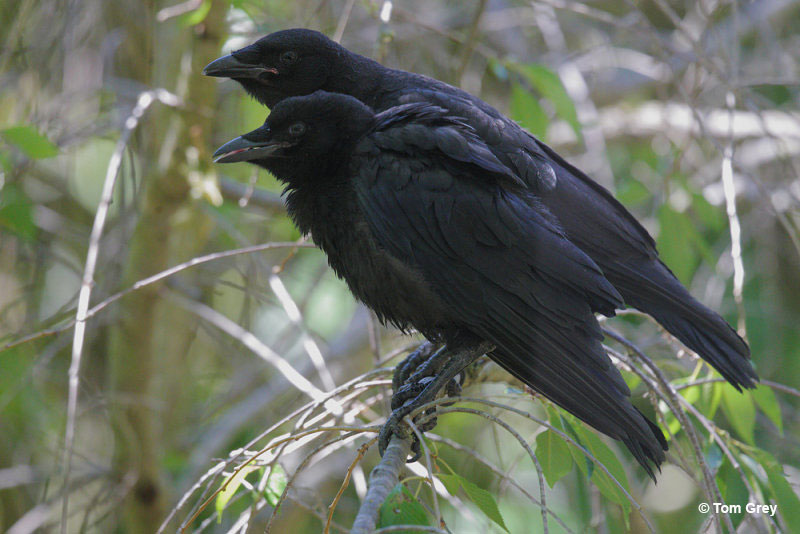Blackbird vs crow they are both common birds, but do you know the difference between the two?
Many people mistake these two birds for each other, which is understandable. However, even though theyre both black birds, several traits set them apart.
For example, blackbirds and crows look similar at a glance, but theyre different from each other in the shape of their tails, the shape of their beaks, their diet, size, calls, and nesting.
In this article, well go over both the similarities and differences between these two birds to help you quickly identify whos who.
From a distance, blackbirds and crows look almost the same, but when taking a closer look, you can see the different physical characteristics of these birds.
One of the best indicators to tell these birds apart is by looking at their tails. When in flight, crows tails are fan-shaped in appearance, while blackbirds have relatively long tails that end in a point.
In addition, crows beaks are significantly different from blackbirds beaks. Crows have beaks that are nearly black; in some lighting, they look deep purple.
Their beaks are fairly large and nearly 2 inches long. Their bills are strong and slightly arched, which allows them to effortlessly consume fruits, seeds, and insects.
Blackbirds have moderately sized bills that vary in color depending on the species. Their medium-sized bills allow them to easily consume berries, insects, and bugs. Since their bills are thin and pointed, theyre a great feature to look for when trying to identify a bird.
It shouldnt come as a surprise that there are countless different blackbird species in the United States from Brewers Blackbirds to Red-winged and Yellow-headed Blackbirds. Even orioles, grackles, and meadowlarks are part of the blackbird family.
Blackbird vs Crow Frequently Asked Questions
Crows and blackbirds differ greatly in terms of size, age, location, speed, diet, and behavior.
Blackbird vs Crow Diet
Blackbirds mostly eat grains and seeds, but when insects are abundant in the summer, they also eat them, just like many other small birds. Blackbirds in parks, outdoor cafés, and towns will eat almost anything.
They have also been observed consuming nestling Ring-necked Pheasants, Brewer’s Sparrows, tiny frogs, and young voles. They are observed strolling on lily pads and pursuing aquatic insects in marshes.
Crows consume a wide range of foods, such as grains, seeds, nuts, berries, fruits, and numerous small animals like earthworms and mice. They also consume a wide range of aquatic animals and insects, including fish, clams, mussels, crayfish, and agricultural pests.
In addition, crows are frequent nest predators. Many species’ nestlings and eggs, such as those of robins, sparrows, terns, jays, eiders, and loons, will be devoured by them. Theyve even been known to eat garbage and carrion.
The location of blackbirds and crows is another distinction. Blackbirds are found all across the United States. Nonetheless, they typically live close to wetlands, moist forests, and conifers.
American crows are also found across the U. S. Crows usually live in areas with a few trees or close to the edge of forests. These birds are also found in urban areas; dumps and city parks are good places to see them because they provide an abundance of food.
Nesting in loose colonies, blackbirds can have as few as a few pairs or as many as over a hundred members. First, females arrive to select the nesting site; later, other birds will arrive to select from the surrounding areas. Certain years, colonies of birds nest in low shrubs, while other years they are in the tops of trees.


Female blackbirds are the ones to build the nest cup. They frequently use finely dried grasses, rootlets, and hair-lined twigs and plant stems.
Occasionally, the materials are cemented using even mud and manure. The completed nest measures about 6 inches in width and 2 inches in height, and it can take anywhere from 5 to 10 days to complete.
- Clutch size is 3 to 7 eggs.
- Blackbirds have 1 to 2 broods per breeding season.
- Egg length can be anywhere from 0. 9 to 1. 1 inches (2. 3 to 2. 9 centimeters).
- Egg width can be anywhere from 0. 7 to 0. 8 inches (1. 7 to 2 centimeters).
- The incubation period is 11 to 17 days.
- The nestling period is 12 to 16 days.
Crows frequently conceal their nests in horizontal tree branches or close to a tree’s trunk. Usually, the nest is situated close to the highest third or quarter of the tree. Although they prefer to build their nests in evergreens, crows can also be observed doing so in deciduous trees in the absence of evergreens.
Both parents will help create the nest. Furthermore, yearling crows from the previous year will occasionally assist. Medium-sized twigs are frequently used to build crows’ nests, which also feature an inner cup lined with soft bark, weeds, pine needles, or animal hair.
Although nest sizes can vary greatly, they are typically 6 to 19 inches wide, with an inner cup that is 4 to 15 inches tall and roughly 6 to 14 inches wide.
- Clutch size is 3 to 9 eggs.
- Crows have 1 to 2 broods per breeding season.
- Egg length can be anywhere from 1. 4 to 1. 9 inches (3. 6 to 4. 7 centimeters).
- Egg width can be anywhere from 1. 0 to 1. 2 inches (2. 6 to 3. 1 centimeters).
- The incubation period is 16 to 18 days.
- The nestling period is 20 to 40 days.
Blackbird vs Crow Behavior
Due to their monogamous nature, blackbirds typically migrate far further than crows. But these are birds that aren’t comfortable around people or animals. These kinds of settings are ideal for crows, as they enable them to travel less distances. Because they are monogamous, both parents will assist in raising the young. But typically, female blackbirds are the ones who construct the nest.


Crows engage in winter brooding. This entails their congregating in habitats with big trees in groups of hundreds or thousands. They typically do this in the afternoon and spend the night at their permanent location. Additionally, crows are cooperative breeders.
This implies that some children won’t leave the nest to raise their own families. Rather, they will stay at the nesting site to protect against predators and raise other crows that are not their own.
Anting is a known behavior exhibited by American crows. Through a special process, ants help birds fight off parasites. Anting is the practice of letting ants climb on you while you’re standing atop an anthill. Theyll then rub the ants throughout their feathers.
FAQ
What is the difference between a black bird and a crow?
Are there other black birds besides crows?
Is a black bird in the crow family?
What are all black birds called?